


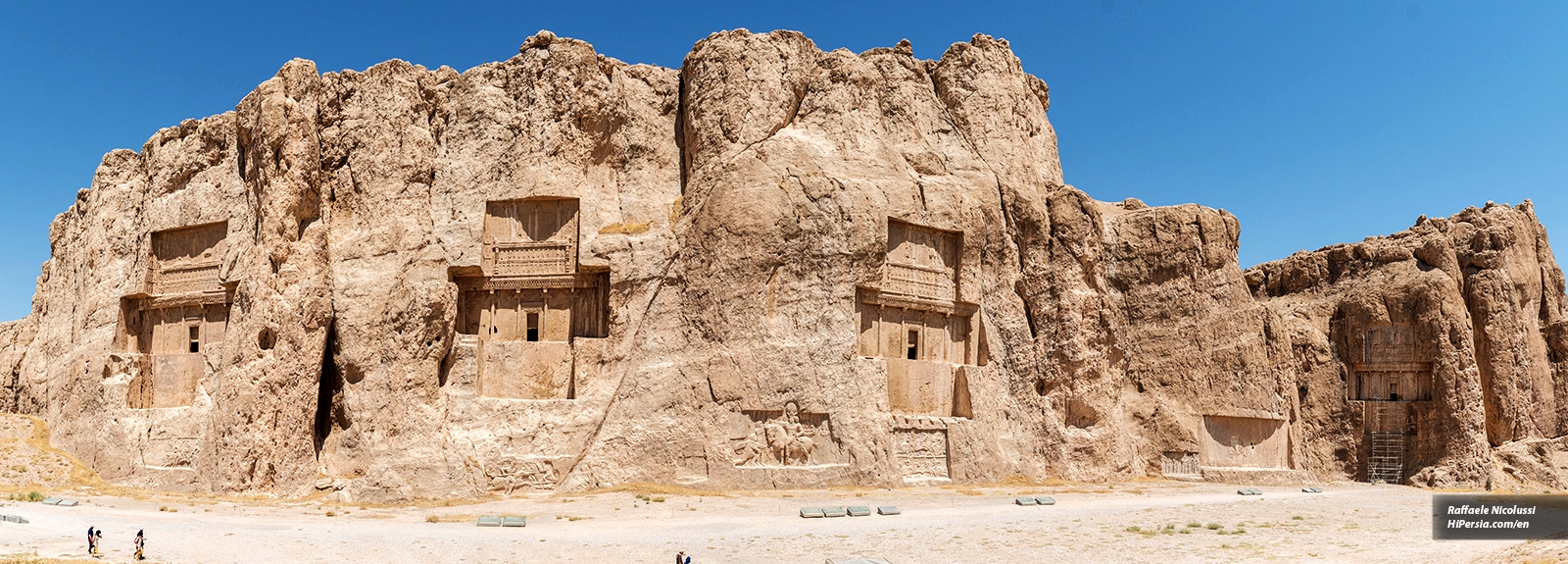
Naqsh-e Rustam is an unparalleled collection of three eras of the Persian empire's monuments. Naqsh-e Rustam is a precious monument that includes: the Elam's role of the gods, the tomb of the Achaemenid kings and relief of Sassanid kings.
The Naqsh-e Rustam is six km away from Persepolis. These reliefs and tombs, designed by lithograph, are on a vertical cliff of Mount Hosein. The Naqsh-e Rustam is divided into nine main parts, which include of which four are tombs, and the other four include reliefs and a cube of Zoroaster.

The relief of a king, who has a bow in his hand, is visible above the platform; this is the sign of power. The figure of Ahura Mazda is seen in front of the king. There are two fire altars on this relief. In the upper right corner of the image, the pattern of the moon is observed to show the instability of the universe. At the bottom of the platform, the representatives of the native nations have held the throne with their hands. There are pillars in these reliefs which they have two cow heads. Some of the roaring lions are seen at the bottom of the pattern that is decorated with a lotus. The lotus in the Eastern culture is a symbol of purity.
These tombs belong to Darius the Great, Xerxes I, Artaxerxes I, and Darius II.
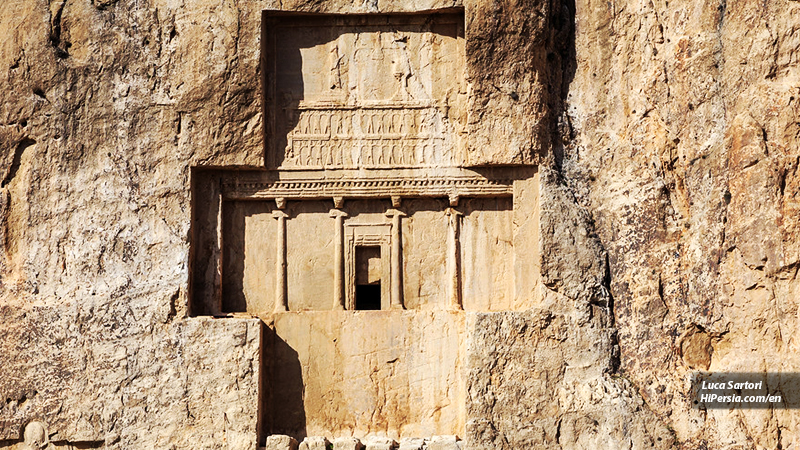
There are some reliefs in the Naqsh-e Rustam that belong to the Sasanian era. In the first relief of the right, except for a large hole in it, no carving was cleft. It seems that this work belongs to the late Sassanid period, which was intended to commemorate the main events of the Sassanid era.
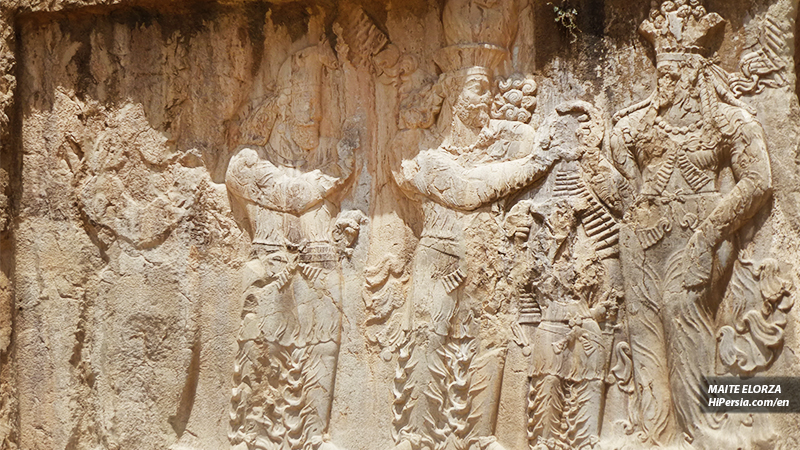
The younger son of the famous Shapur I, named Narses, is shown here invested with divine right to rule. In this figure, Narses receives the ring of power from Anahita (one of the gods). The smaller figure appearing between the king and Anahita is probably the prince Hormozd II. Behind the king, the great minister was standing, and with the index finger of his right hand kept respect for the king.
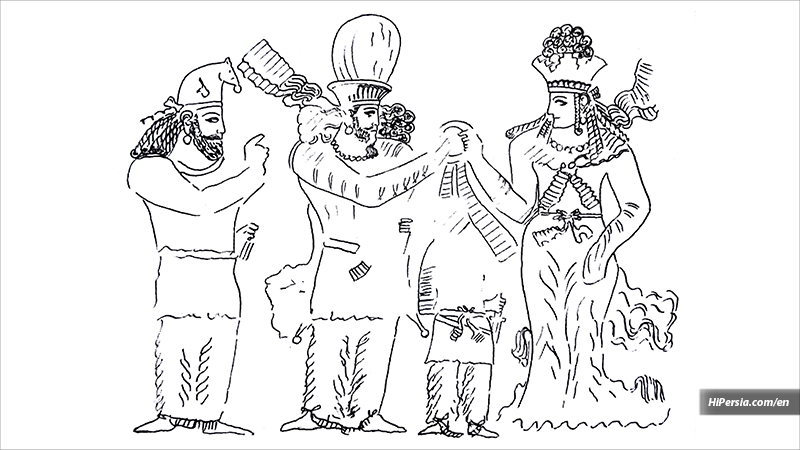
In this war's relief, Bahram II (298-276 AD) is fighting and riding a horse, toward the enemy attack. The Bahram horse trampled the Roman soldier underfoot. Behind Bahram, a Persian soldier has raised a flag. The three spheres on the relief and the flag represent the attack.


This is the most striking of the Sasanian rock reliefs at Naqsh-e Rustam. In this figure, Emperor Valerian holds his hands up and apologizes to Shapur and kneels in front of him. Behind Shapur, Kartir (he was a powerful and influential Zoroastrian priest during the reigns of four Sasanian kings in the 3rd century) is present, showing his fingers due to respect.


Under the Tomb of Darius II and facing the cube of Zoroastrian, there is probably a figure from Shapur II (379-309 AD). There are two warriors, one of whom is the king.

This figure belongs to two various periods: one era is the Elamite for, 700 years ago, and the other one is Bahram II (294-274 AD), which carved on the relief of Elamite. In this relief, the king stood among the members of the royal family while holding a sword with two hands to show power.
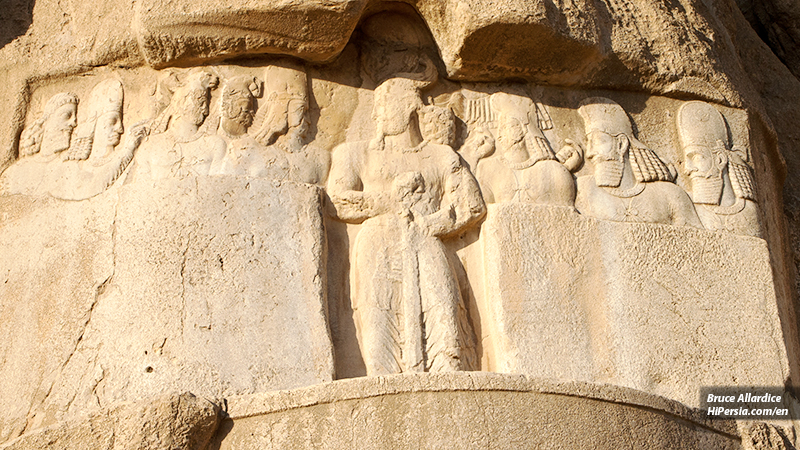

The last relief, the coronation of Ardeshir Babakan (224-229 AD), is depicted. Artaxerxes and Ahura Mazda ride on two small horses, and Ardeshir is taking a king's ring of power from Ahura Mazda, and Artabanus, King of Parthians, drops under Artaxerxes' horse.

The cube of Zoroaster
The cube of Zoroaster (the prophet of ancient Persia) is located opposite the tomb of Darius II. This artistic building is made up of large stone pieces. The building is very similar to the Cambyses Tomb.

The climate of Shiraz is fundamentally warm. We suggest that you travel to Shiraz in April and May to enjoy both the pleasant weather of spring and the historical monuments. Naqsh-e Rustam is open every day from 8 am to 7 pm, but it has a different time for official holidays.
From Shiraz to Naqsh-e Rustam is about an hour by car. You have to take yourself to the Shiraz-Persepolis road. Then, after a long journey, go to the Marvdasht-Sadaat Shahr highway, then get on this road and go to Marv Dasht-Sarooie Road. After a short time, you will be in the Naqsh-e Rustam.






“Oh! Squander not this breath that Heaven hath lent thee, Nor make too sure another breath to borrow!’” Khayam